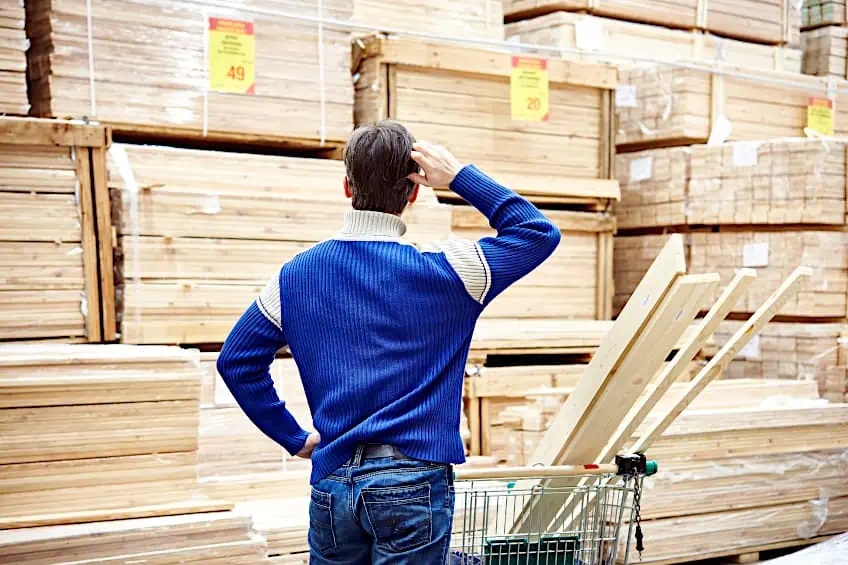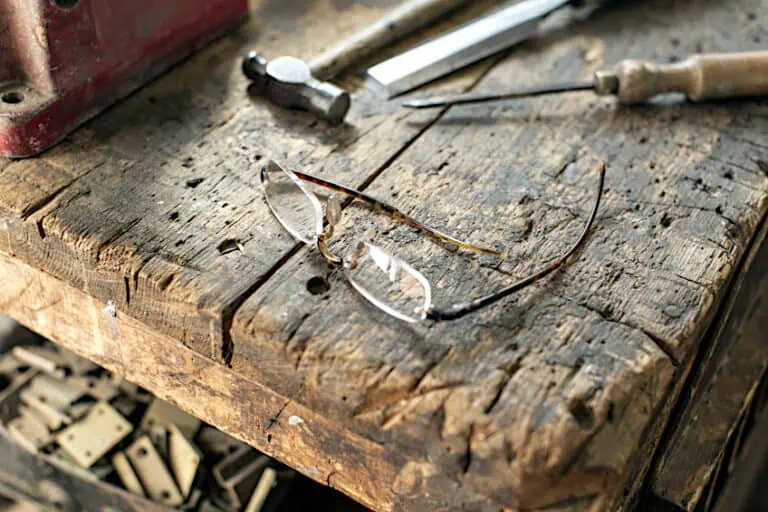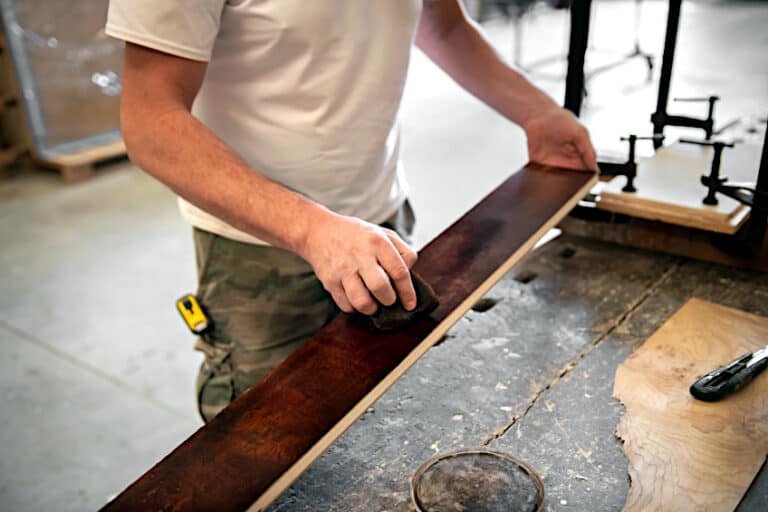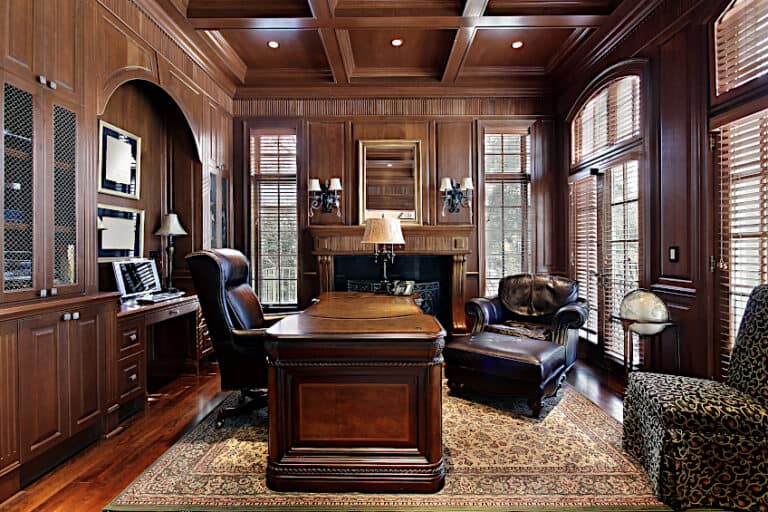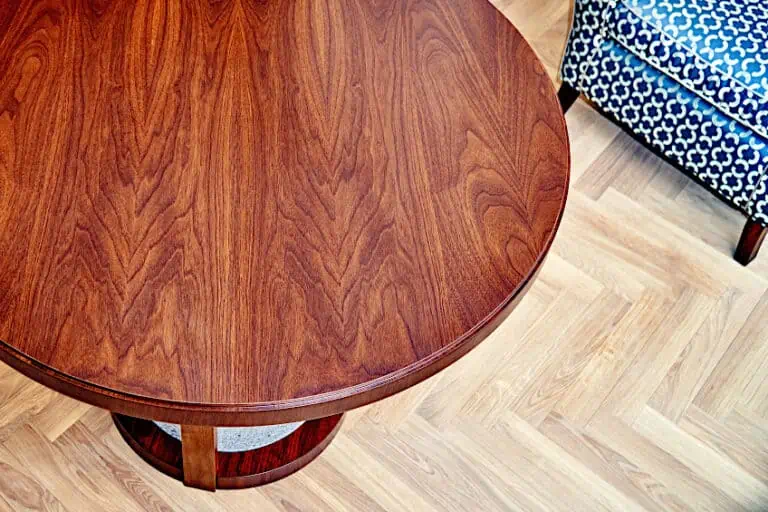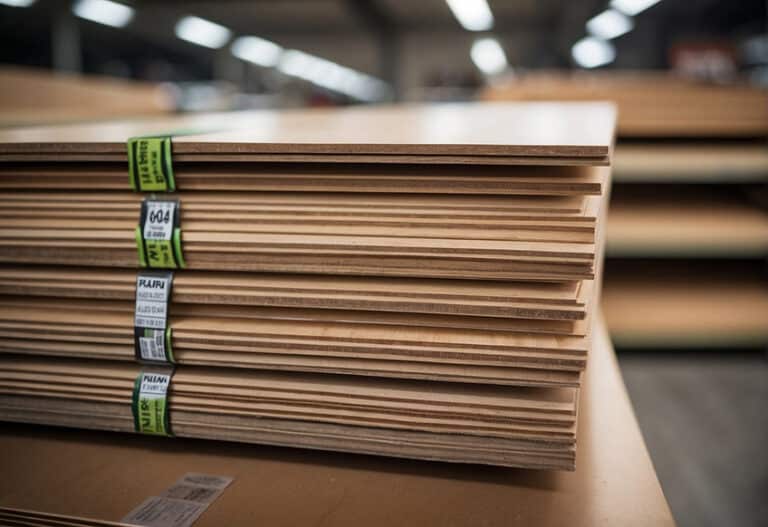How to Tell If Wood Is Pressure Treated – Easy Identification Guide
There are many of ways to protect your wooden workpieces from natural decay, whether it be coating them in epoxy, using wood treatment oils, using some varnish, or simply painting them. Some of these methods require a lot of time and effort to execute though, which is why lots of people prefer using wood that has been pre-treated. Pre-treated wood is commonly known as pressure-treated wood and can be purchased from most lumber suppliers and hardware stores. What exactly is pressure-treated wood, though? How do you know if your wood has been pressure treated? What does pressure-treated wood look like? How is pressure-treated wood made? Let’s have a look at these and some other commonly asked questions about pressure-treated lumber.
What Is Pressure Treated Wood?
Put simply, pressure-treated wood is any piece of wood that has undergone a special process in order to make it resistant to both natural means of decay and forces aimed at accelerating the decay process. What forces, you ask? Well, some of the most common things staved off by the pressure treatment process are mold, fungus, water damage, and insect infestation.

In some instances, the pressure treatment process can make your wood immune to the effects of open flames and directed heat. Various types of pressure-treated wood have been produced for a wide variety of applications, but all of them ensure that the wood’s surface and internal fibers are protected from microbial and moisture-related damage.
How Is Wood Pressure Treated?
How is wood pressure treated? Well, as the name suggests, the pressure treatment process involves using a pressure-related process to imbue the wood’s fibers with resistance to the aforementioned conditions. How is this done? Firstly, a wood board is placed into a large cylindrical container that resembles a train car.
Once inside, the container is pneumatically sealed and the wood inside it undergoes a process through which all of the moisture in the wood’s fibers is extracted. Once the moisture and air in the chamber have been removed, the chamber is then pressurized and flooded with a combination of chemicals which are then absorbed into the wood’s fibers.

Once the pressure treatment process has been completed, the wood is then removed from the chamber and placed on a rack to dry out. The drying process typically takes up to three days to complete, at which point the wood can be shipped to various wholesalers and retailers for sale to the public.
Virtually any wood species can be pressure treated, but generally speaking, only wood species that are typically used for exterior use will undergo this treatment process to ensure their continued longevity. The chemicals used in the pressure treatment process can be harmful should they come into direct contact with your skin or if they’re inhaled, so it’s important to wear the appropriate personal protective gear when handling pressure-treated lumber.
What Is Pressure Treated Wood Used For?
As we mentioned previously pressure-treated wood is used for a wide variety of applications in many industries all over the world. However, most applications boil down to two primary facets of the industry that pressure-treated wood can be found in. These are namely private home use and heavy-duty exterior construction applications.
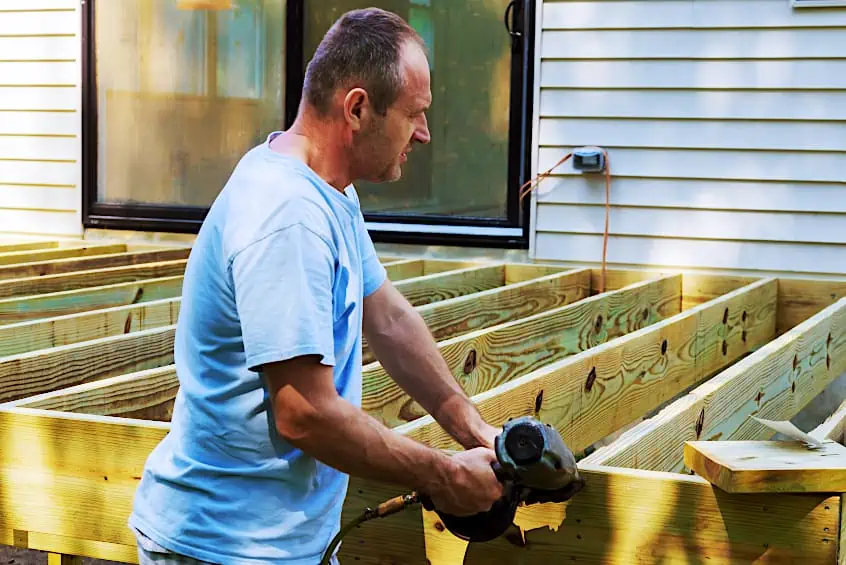
Private Home Use
The use of pressure-treated wood in at-home applications has become more commonplace over time. After all, if you have access to pressure-treated lumber the amount of time, money, and effort you need to spend on protecting your wood decreases significantly. As an added bonus, pressure-treated wood can still be painted, stained, and coated with things like epoxy should the need arise.
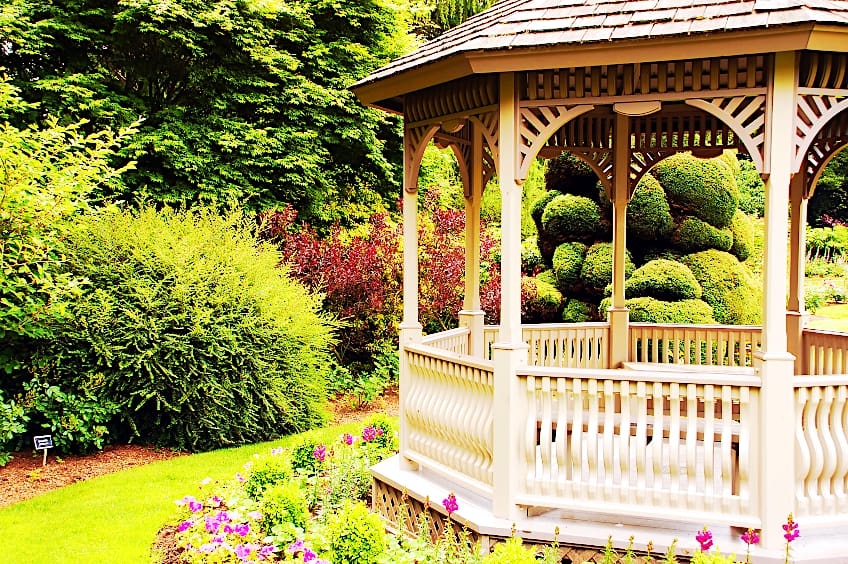
Pressure-treated wood is generally used for outdoor applications. Therefore, it’s fairly common to find pressure-treated lumber being used to construct sheds, wooden decks, treehouses, bird feeds, fences, flower bed borders, and even exterior trim for homes! Pressure-treated lumber can be expensive though, so we suggest keeping this in mind especially if you intend to use it in large quantities.
Heavy Duty Construction
As you can imagine, wood that is resistant to the effects of rot, moisture, and insect infestation is highly sought after in the construction industry. It should come as no surprise then that pressure-treated wood is commonly used in large-scale construction projects that require the workpieces in question to be constantly exposed to the elements.
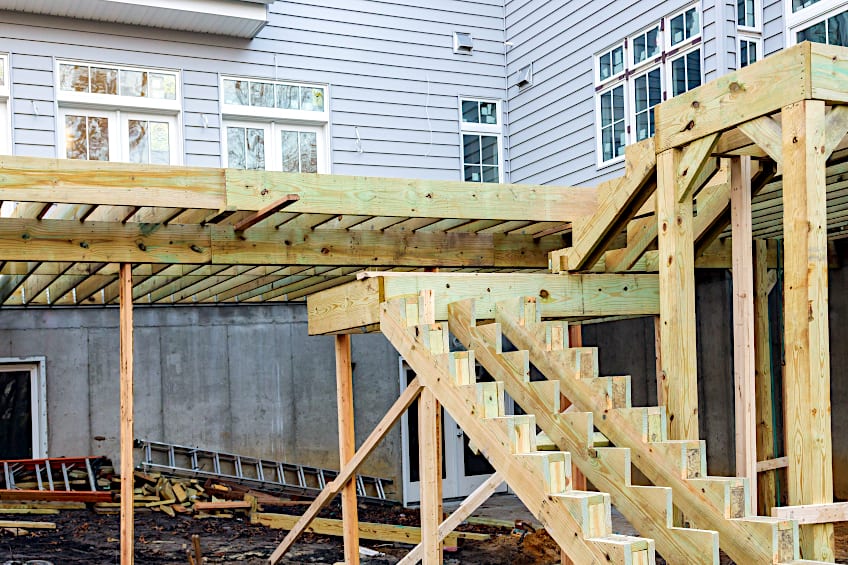
There are many instances in everyday life where pressure-treated wood can be found. Whether it be guard rails, wooden docks, wooden bridges, phone lines, and electricity poles, or the construction of indoor swimming pools, pressure-treated wood can be found silently fulfilling its purpose. Pressure-treated wood can even be found in the construction of roofing and underwater structures.
How to Tell If Wood Is Pressure Treated
Knowing what pressure-treated wood is and what it’s used for is all well and good, but it’s pretty useless unless you know how to find it. There are various ways of identifying pressure-treated wood, so let’s have a look at a few of the indicators you can look out for to ensure that you’re purchasing pressure-treated wood every time.
Look for the Pressure Treatment/Preservative Stamp
If you’re purchasing wood from a retailer or lumber yard, the boards should be marked or stamped to indicate whether the wood has any preservatives added to it. There should be a stamp or tag attached to each board and they’ll usually indicate what type of treatment the wood has undergone, as well as what applications the board would be best suited for. Here are a few common preservative labels you could encounter when purchasing lumber:
- Micronized Copper Quaternary (MCQ)
- Copper-HDO
- Copper naphthenate
- Creosote
- Pentachlorophenol (PCP)
- Acid copper chromate (ACC)
- Alkaline copper quaternary (ACQ)
- Copper azole (CA)
- Sodium Borate (SBX)
- Chromated copper arsenate (CCA)
Look for Incisions on the Surface of the Wood
Another easy way to tell if the wood has been pressure treated or whether it contains any sort of preservative is to keep an eye out for incisions on the surface of wooden boards. These incisions are made to ensure that the chemicals induced by the pressure treatment process are adequately absorbed into the fibers of the wood.
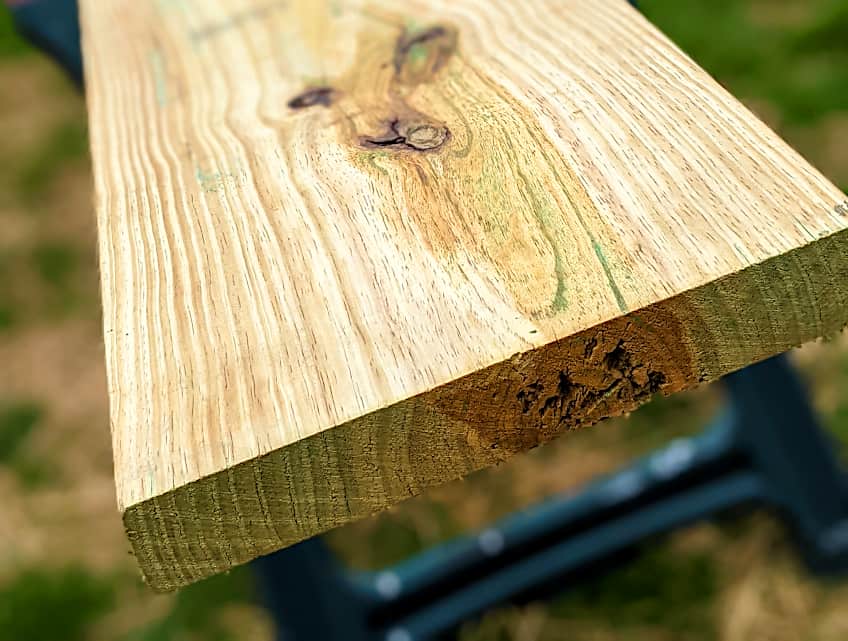
These incisions can be found on every face of the wooden board and the tool used to create said incisions ensures that they’re cut in regular intervals, making them fairly distinct. These incisions are usually between ¾ to ½ inch in depth and are usually found on denser wood species to ensure that the chemical treatment is properly absorbed into their denser wood fibers.
Look for a Difference in Color/Tint
A dead giveaway for any wood that has been pressure treated or simply had a preservative added to it tends to take on a different color. The difference should be immediately apparent if you work with wood often, but if you aren’t familiar with the natural appearance of certain wood species, simply look for a slight green tint on the surface of the wooden board.
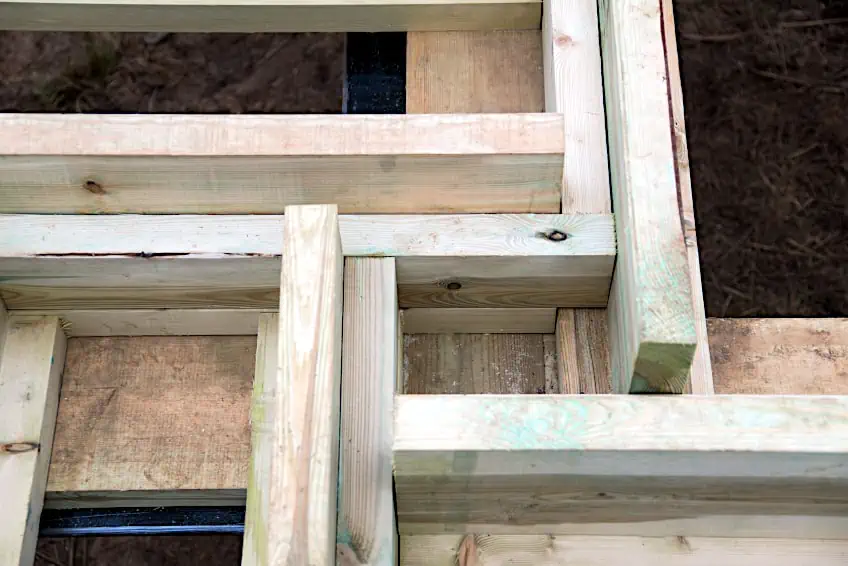
This green color is a direct result of the chemicals that are fused to the wood. Once the boards have had incisions cut into them, the surfaces of the wood board are coated in additional preservatives that fuse with the wood’s fibers once the chamber is pressurized. This causes some of the dye content of the chemical treatment to stain the surface of the wood.
Pay Attention to a Difference in Smell
If you’re wondering how to tell if wood is pressure treated without the use of visual cues, we recommend looking out for smells that could indicate the presence of preservatives present on the surface of the wood. What would these preservatives smell like, you ask? Pressure-treated wood tends to smell like oil, or if the chemicals are water-based, the surface of the wood could simply smell pungent.

While all wood species are unique, most wood species tend to have a similar smell. Therefore, should you find yourself wondering whether a wooden board has been pressure treated, simply give it a good sniff. If you’re worried about inhaling chemical fumes, you can rest assured that pressure-treated wood is relatively safe for human contact and the environment.
Assess the Size of the Wood Board
What does pressure-treated wood look like? Well, aside from the distinctive incisions and the pressure-treated lumber stamp, the pressure-treated wood board tends to look a bit bigger than untreated wood. You might notice that the wood board looks “puffy” as a result of the pressure treatment process, adding another visual distinction for you to keep an eye out for.
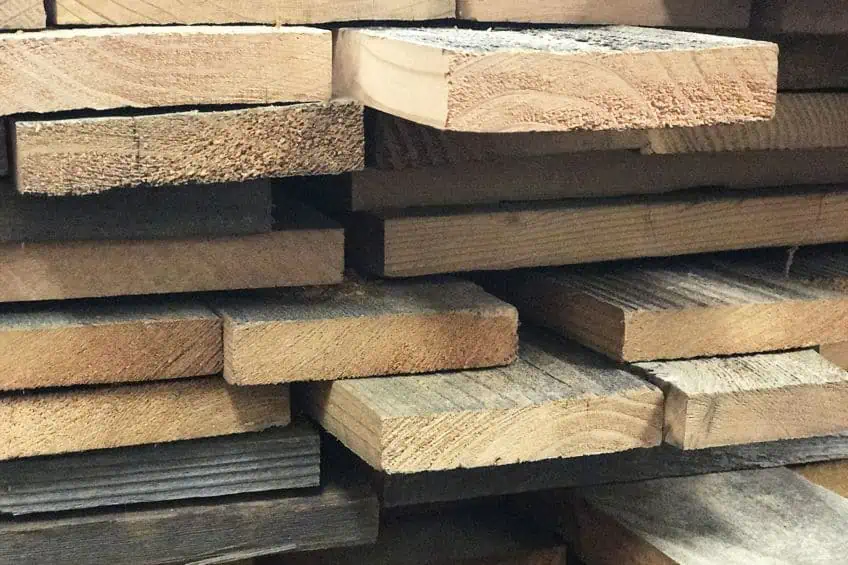
Why does pressure-treated wood appear bigger compared to untreated wood you ask? Well, the pressure treatment process quite literally adds more mass to the wood board by forcing the chemical preservatives into the wood’s fibers. This adds to the mass of the wood, increasing both its weight and size once the process has been completed.
Check the Wood’s Information Sheet
If you’re still having some trouble identifying pressure-treated wood, you could skip trying to identify them entirely and simply ask for a lumber information sheet. What is a lumber information sheet you ask? Well, as the name suggests, this sheet contains all of the necessary information about a given piece of lumber on sale by a retailer.
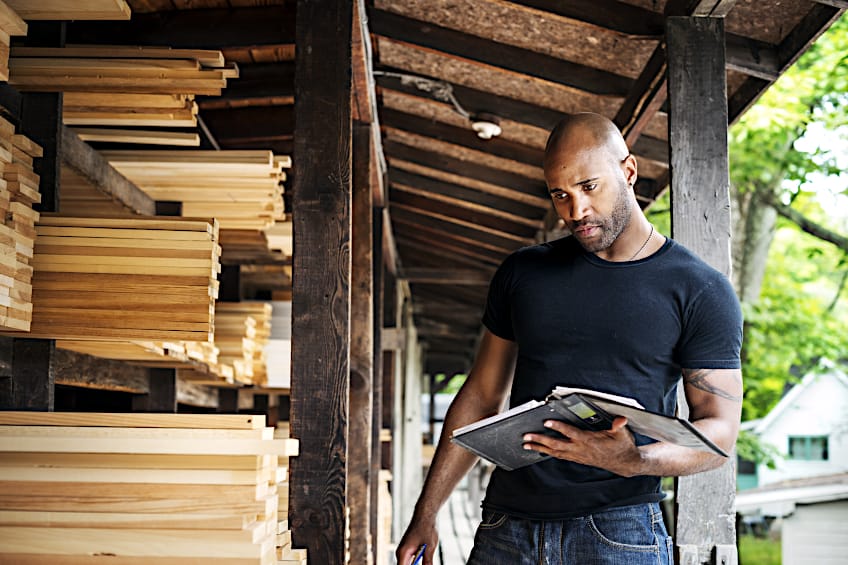
Lumber retailers are required to have these sheets readily available to consumers, and they’re pretty useful too. These fact sheets usually let you know whether or not the wood has been pressure treated, whether it’s safe to be burned, what tree species the wood is derived from, and if there are any special measures that need to be taken when the wood is handled and/or cut.
Try Using a Testing Kit on Your Wood
This method is particularly useful if you’re making use of reclaimed wood and aren’t quite sure if it’s been pressure treated. This is pretty important considering that before the year 2004, the pressure treatment process involved the use of arsenic. Therefore, if you intend on burning old pressure-treated wood, it’s a good idea to test it if you suspect that it could contain preservatives.
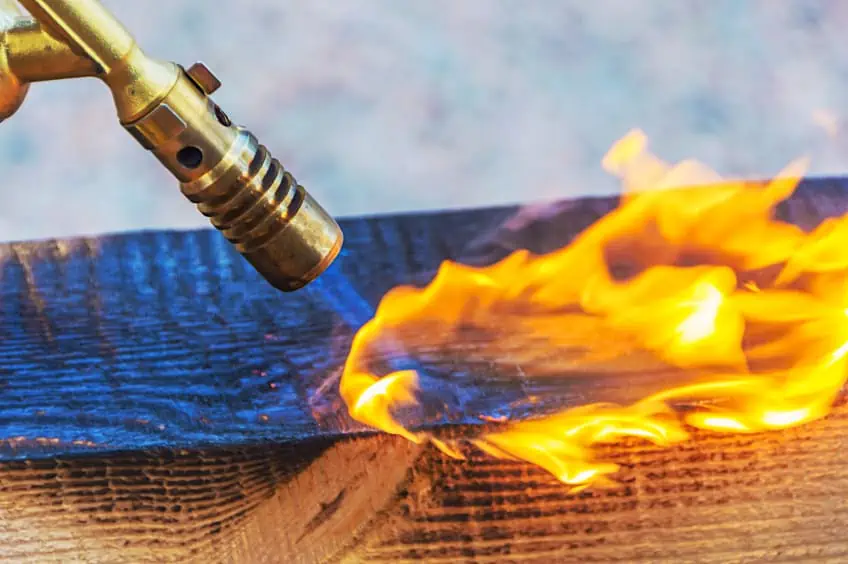
If the wood is devoid of the pressure treatment lumber stamp, you can simply purchase a CCA (chromated copper arsenate) test kit and follow the simple instructions. This test only tests for arsenic and is therefore only conducive for testing older wood, so if you have newer lumber that you’d like to test we recommend purchasing a full wood testing kit either in-store or online.
Is Pressure-Treated Wood Better Than Untreated Wood?
As we mentioned previously, pressure-treated wood is simply a wood board that has undergone a process whereby chemicals are joined with the wood fibers to ensure its longevity and resistance to rot and decay. Does this make pressure-treated wood stronger or more resistant to things like impact, abrasion, heat, or splitting?
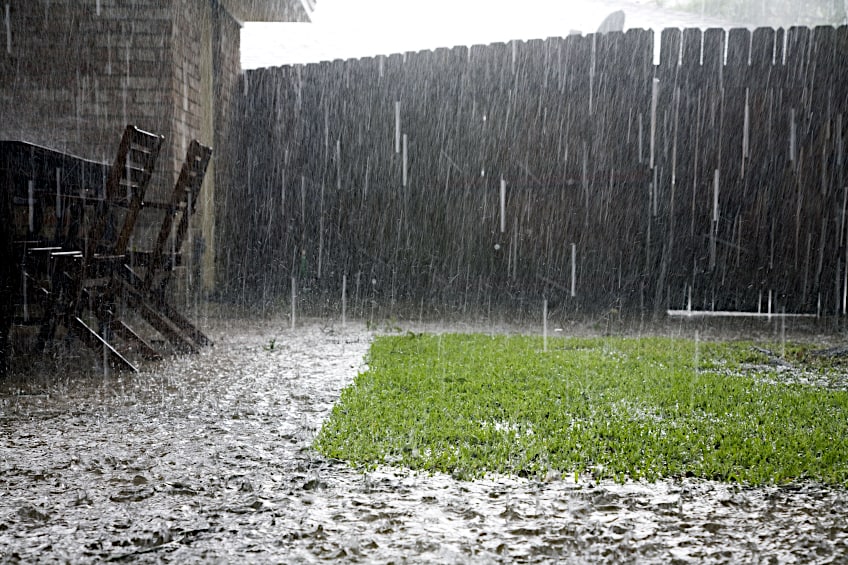
No, it does not. The pressure treatment process simply ensures that your wood board is able to survive in moisture-rich environments, and in no way makes the wood stiffer, harder, or more robust when exposed to blunt force impact than untreated wood. This being said, there are different types of pressure-treated wood, namely ground contact pressure-treated wood and conventional pressure-treated wood.
Now that you know what pressure-treated wood is, how pressure-treated wood is made, where pressure-treated wood is used, and how you can identify pressure-treated wood, it’s time for you to get out there and put your newfound knowledge to the test. Always remember to wear the appropriate personal protective gear when working with undried pressure-treated wood, and to ensure that you choose the right type of pressure-treated wood for your next project!
Frequently Asked Questions
What Does It Mean for Wood to Be Pressure Treated?
You might have seen the pressure-treated lumber stamp on some wood board and wondered what it means. Essentially, pressure-treated wood is any wooden board that has undergone a process whereby the board’s wood fibers are fused with aerosolized chemicals in a pressure chamber to stave off rot, insects, mold, and moisture.
Is Pressure-Treated Timber Safe?
Modern pressure-treated wood is safe when dried completely. Before 2004, pressure-treated wood contained a form of arsenic, which made it unsafe for a variety of applications. Thankfully, modern pressure-treated timber is completely safe when dried and no longer contains arsenic in any form.
Why Is Pressure-Treated Wood Better?
Whether pressure-treated wood is objectively better than untreated wood depends on the application. If your wooden workpiece will be situated outdoors or in an otherwise moisture-rich environment, pressure-treated wood will prove to be more robust. In virtually any other application, pressure-treated wood and untreated wood tend to perform the same in terms of durability.

I have been into woodworking since 2005 and woodturning since 2011. Because of my love for wood and woodworking, I started woodhappen.com to teach other enthusiasts about how to finish and seal wood, the best woodworking tools, the different types of wood, and everything else related to woodworking! Read more about me here.

